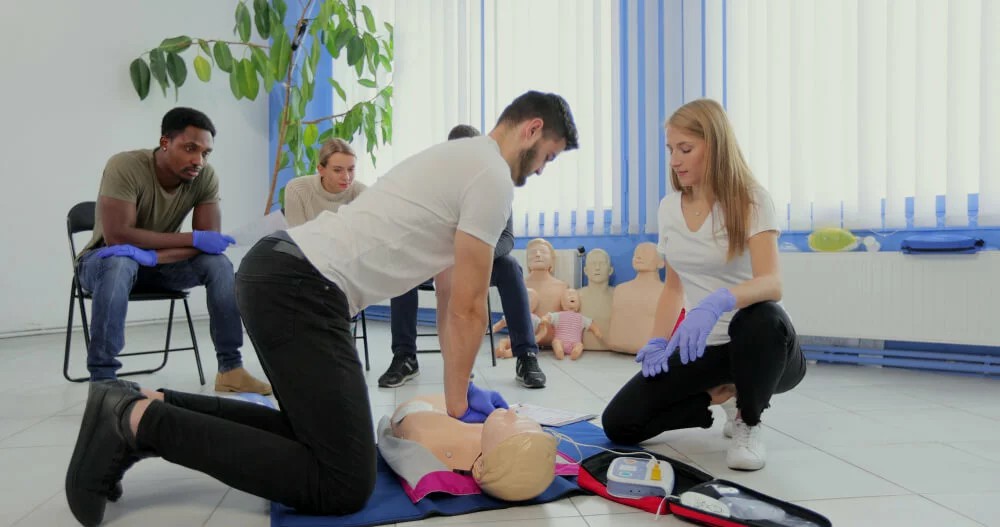Empowering Safety: The Indispensable Role of First Aid and CPR Training in the Workplace
In an unpredictable world, ensuring workplace safety is paramount. First Aid and CPR training provide your employees with essential skills to respond effectively during emergencies, enhancing safety protocols and compliance with health regulations. Whether you're a business owner, HR professional, safety officer, healthcare worker, or employee, understanding the importance of training in First Aid and CPR can vastly improve emergency preparedness and workplace culture.
The Value of First Aid Certification for Employers and Employees
Investing in a First Aid Course or obtaining a First Aid Certification isn't merely a compliance tactic; it's a secure investment in your workforce's health and safety. Here are the key benefits:
- Enhanced Emergency Preparedness: First Aid certification ensures that employees can act decisively and effectively during emergencies, reducing panic and chaos.
- Employer Compliance: Adhering to workplace health and safety regulations is essential. Demonstrating that employees are trained in First Aid can protect your organization from legal liabilities.
- Increased Employee Confidence: Employees who have completed training feel more confident in their ability to handle crises, leading to a more proactive safety culture.
- Potentially Life-Saving Skills: Knowledge of emergency first aid techniques can save lives in critical situations, making training not only beneficial but essential.
Critical CPR Techniques Every Workplace Should Implement
Performing CPR correctly can mean the difference between life and death. Here are some basic CPR techniques that every workplace should cover:
- Call for Help: Always ensure that emergency services are contacted immediately. Delegate this responsibility if you are performing CPR.
- Check the Scene: Ensure the environment is safe before approaching the victim.
- Open the Airway: Tilt the victim's head back gently and lift the chin. Check for breathing.
- Chest Compressions: Kneel beside the person. Place your hands, one on top of the other, in the center of their chest and compress hard and fast, at a rate of 100 to 120 compressions per minute.
- Rescue Breaths: After every 30 compressions, give 2 rescue breaths if you are trained to do so. Ensure the chest rises for each breath.
Navigating Workplace Health and Safety Regulations through Effective First Aid Compliance
Health and safety regulations often require certain standards be met regarding emergency medical response. Compliance is achieved through proper training:
- Understanding Regulations: Familiarizing employees with First Aid requirements and emergency response protocols is crucial in a compliant workplace.
- Regular Training Updates: Offering ongoing training sessions keeps the knowledge fresh and equips employees to meet changing guidelines.
- Record Keeping: Documenting training sessions and certifications ensures your workplace meets compliance standards and is prepared for inspections.
Immediate Response: Essential Emergency First Aid Procedures
Time is of the essence in emergencies. Essential emergency procedures that every employee should know include:
- Assess the Situation: Quickly determine the cause of the emergency and the number of people affected.
- Administer First Aid: Apply appropriate techniques based on the type of injury, whether it's bleeding, choking, electric shock, or other emergencies.
- Monitor Vital Signs: Keep an eye on the injured person's condition until emergency services arrive.
Selecting the Ideal First Aid Training for Your Workplace
Choosing the right First Aid Course is fundamental. Consider the following factors:
- Course Content: Ensure the training covers topics relevant to your workplace environment.
- Certification Recognition: Confirm that the certification is recognized and meets regulatory compliance.
- Instructor Experience: Opt for trainers with practical experience in emergency medical response.
- Flexibility in Learning: Evaluate both in-person and online First Aid courses to suit diverse learning styles.
Comparing Online and In-Person First Aid Training Options
With the rise of digital learning, many organizations are turning to online courses. Each method has unique benefits:
- In-Person Training: Provides hands-on practice and direct interaction with instructors, which can enhance skill retention.
- Online Training: Offers flexibility for busy schedules, allowing employees to learn at their own pace while still covering essential content.
Conclusion & Call to Action
First Aid and CPR training are not just legal requirements but essential components of a safe and responsive workplace. By investing in First Aid & CPR training for your team, you're preparing them for the unexpected and creating a culture of care and preparedness. Enroll in a certified First Aid & CPR course today and empower your employees with the skills they need to act swiftly and effectively in an emergency. For more information, contact us at [email protected].



 349,500 Offered Certificates
349,500 Offered Certificates
 24/7 Online Training
24/7 Online Training
 Money Back Guarantee
Money Back Guarantee
 Fully Accredited Courses
Fully Accredited Courses
